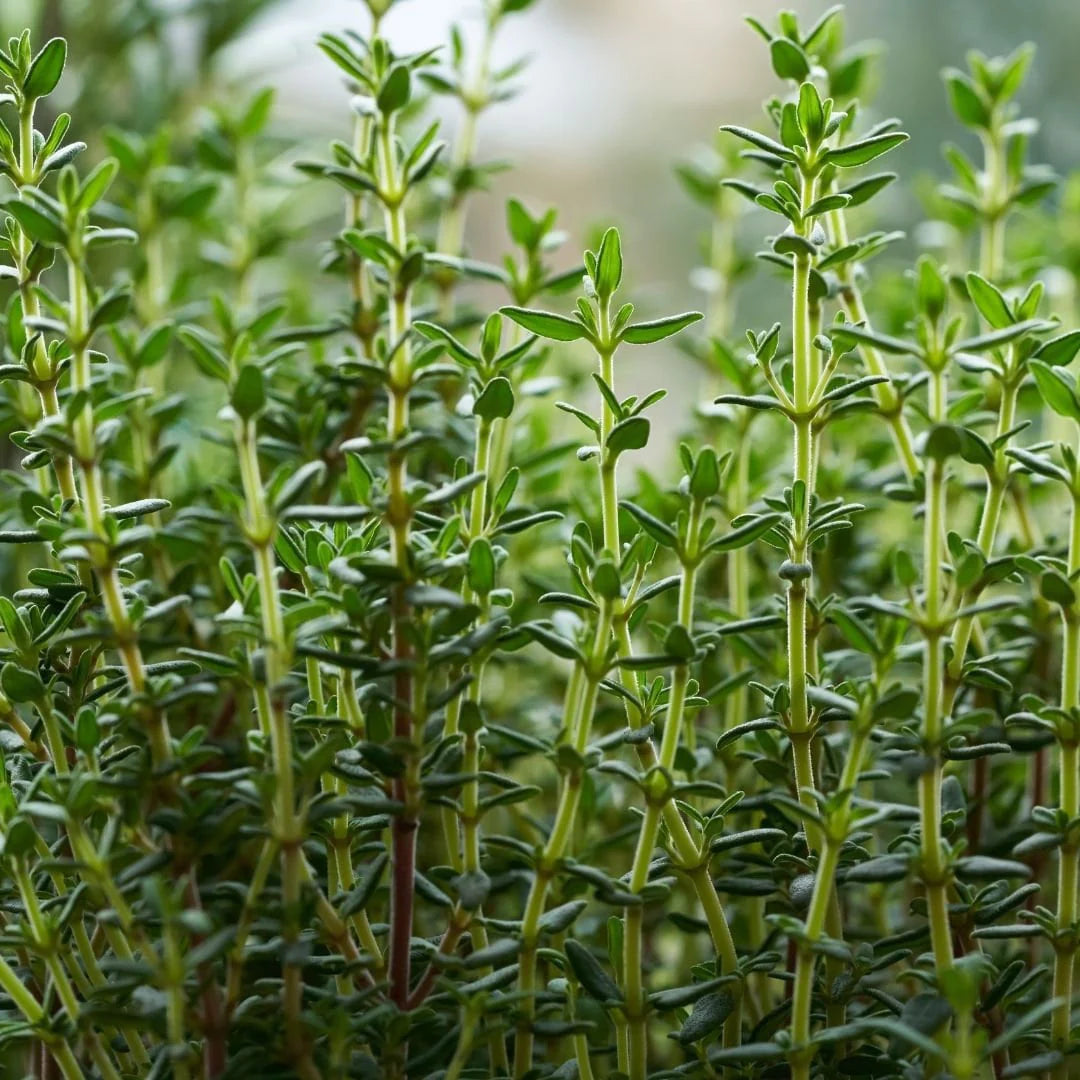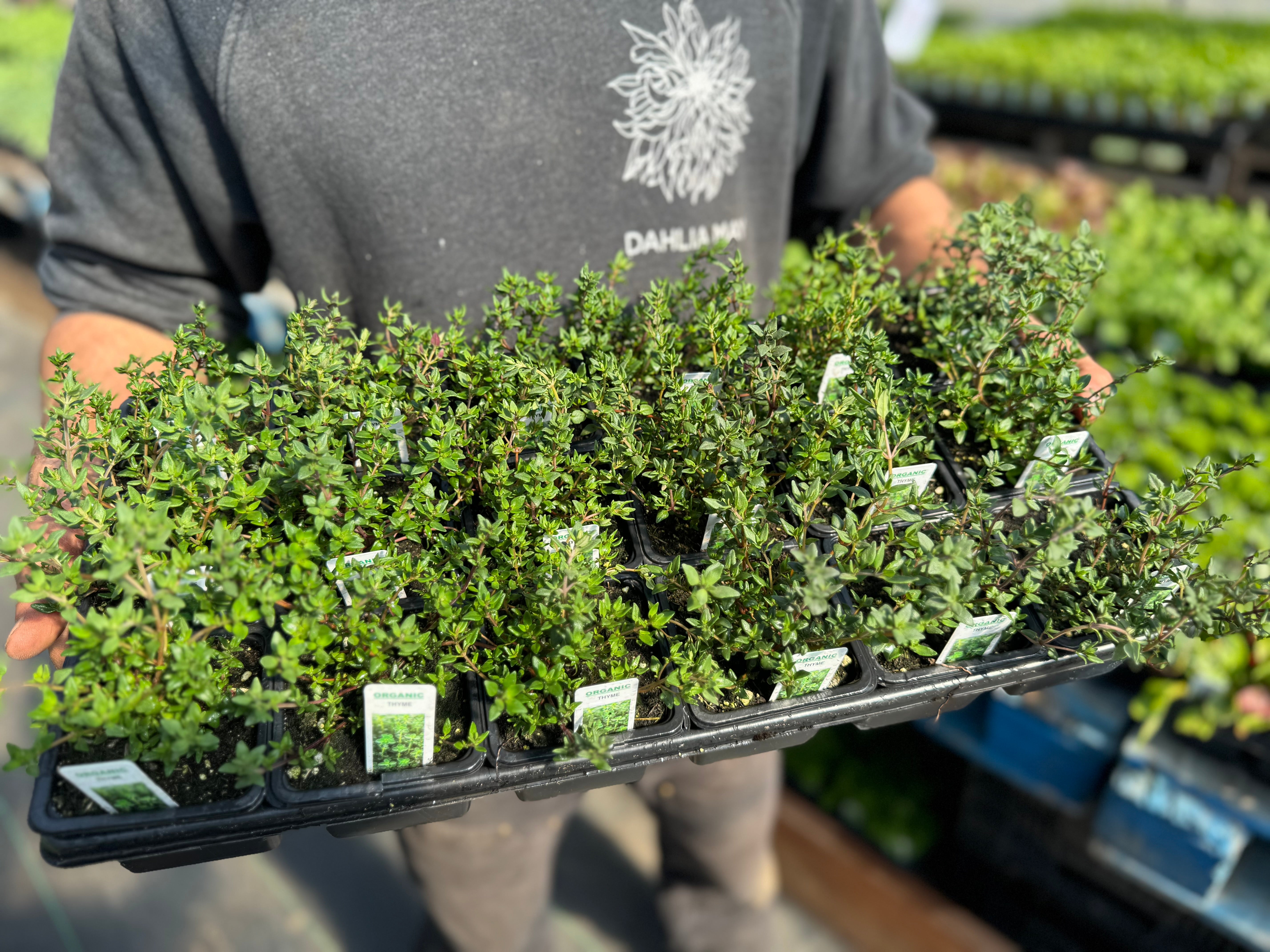

Thyme Plants
Thyme plant, in a 3.5" pot
Thyme plants are small, perennial herbs that belong to the mint family. They are native to the Mediterranean region and are widely cultivated for their culinary and medicinal uses. Thyme plants are low-growing, woody shrubs that typically reach a height of 6-12 inches (15-30 cm). They have small, oval-shaped leaves that are gray-green in color. The leaves are highly aromatic and have a slightly minty, earthy scent.
Tips on how to grow Thyme:
1. Climate and Soil: Thyme plants thrive in warm, sunny conditions. They prefer well-drained soil with a pH level between 6.0 and 8.0. If your soil is heavy or clay-like, consider adding organic matter or sand to improve drainage.
2. Transplant your seedlings directly in the garden, spacing the plants about 12-18 inches apart. You’ll want to make sure that any chance of frost has passed before planting outside. Thyme also does well planted in pots, which is a great idea if you’d like to move your plants indoors for the winter.
3. Watering: Thyme plants are drought-tolerant and prefer dry to moderately moist soil. Water them deeply but infrequently, allowing the soil to dry out between waterings. Overwatering can lead to root rot.
4. Fertilizing: Thyme plants do not require heavy fertilization. A light application of a balanced, slow-release fertilizer in the spring can help promote healthy growth. Avoid over-fertilizing, as it can lead to excessive foliage growth and reduced flavor.
5. Pruning: Regular pruning helps to promote bushier growth and prevent legginess. Trim back the stems after flowering to encourage new growth. Harvesting the leaves also helps to keep the plant compact.
6. Harvesting: Thyme leaves can be harvested once the plant reaches a height of 6-8 inches. Harvest the leaves in the morning when the essential oils are at their peak. Cut the stems just above a leaf node to encourage new growth. Thyme leaves can be used fresh or dried for later use.


